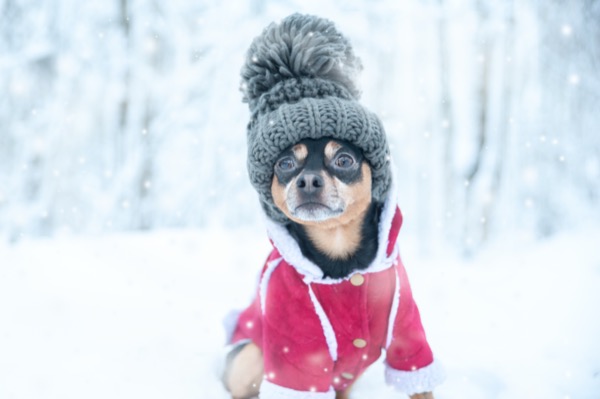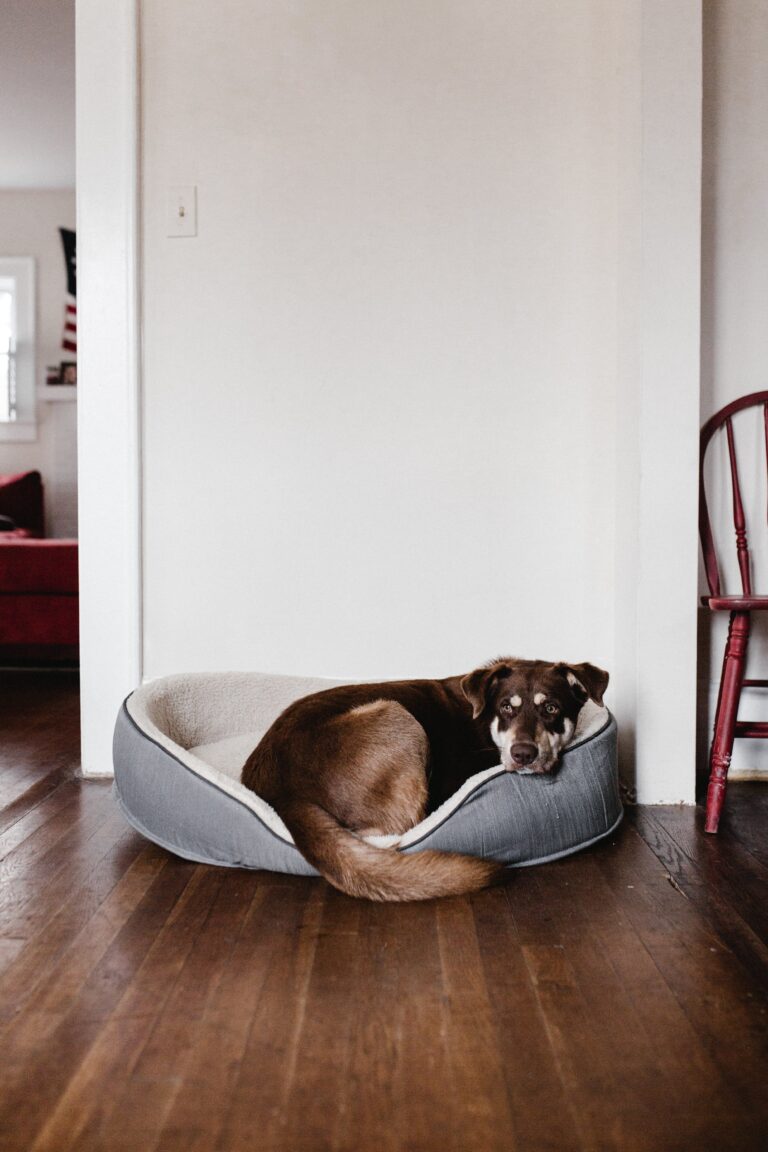You’ve heard the saying before: If you’re cold, your pet is cold, too!
So, just like you bundle yourself up for the winter and spend more time indoors when it’s too frigid, it’s important to take precautions to keep your pet nice and toasty on the coldest days of the year.
Why Does It Matter?
Like people, dogs are susceptible to the dangers that come with too much exposure to cold weather. And very young or old dogs, small dogs, and dogs with short or thin coats are especially at risk!
Hypothermia, or a lowered core temperature, is a condition that happens when people or pets are exposed to extreme cold for an extended period of time, particularly when the skin is wet. Signs of this condition include paleness, shivering and lethargy, and it’s essential to contact a vet if you notice these symptoms and think your pet might have hypothermia.
Frostbite is an extreme cold weather condition that typically affects the paws, nose, ears and tail of animals. If you notice any of these parts appears abnormally bluish-white or gray after prolonged exposure to cold, get immediate veterinary help.
To reduce the risk of these life-threatening exposure-related conditions, reduce your pets’ time spent outdoors in cold weather. A good rule of thumb is that when it’s below 35 degrees, limit your pet’s time spent outside and take precautions to keep him nice and warm!
Ways to Keep Your Pet Warm
There are plenty of ways that you can make outdoor time more pleasant for your pet and reduce the risk of exposure.
To start, when it’s cold out, limit your dogs’ walks to shorter and more frequent walks to allow them to “do their business” without being exposed to the cold for a long time. You can also provide your pet with a sweater or coat—small dogs and short-haired cats can especially benefit from wearing an extra layer of insulation when they need to leave the house in the winter!
Protect your pet’s paw pads when he walks on pavement. Both ice and the salt used to melt ice can prove to be hazardous to animals. You can prevent slipping and salt build-up by getting booties for your pet to wear on walks, or you can wash and dry your pet’s feet following walks to keep the salty winter grime away.
And when in doubt, it’s OK to spend more lazy days inside!
Looking to keep your pets warm, cozy, safe and secure during a winter move? Visit the Airpets International website to learn more about our services and request your moving estimate!



